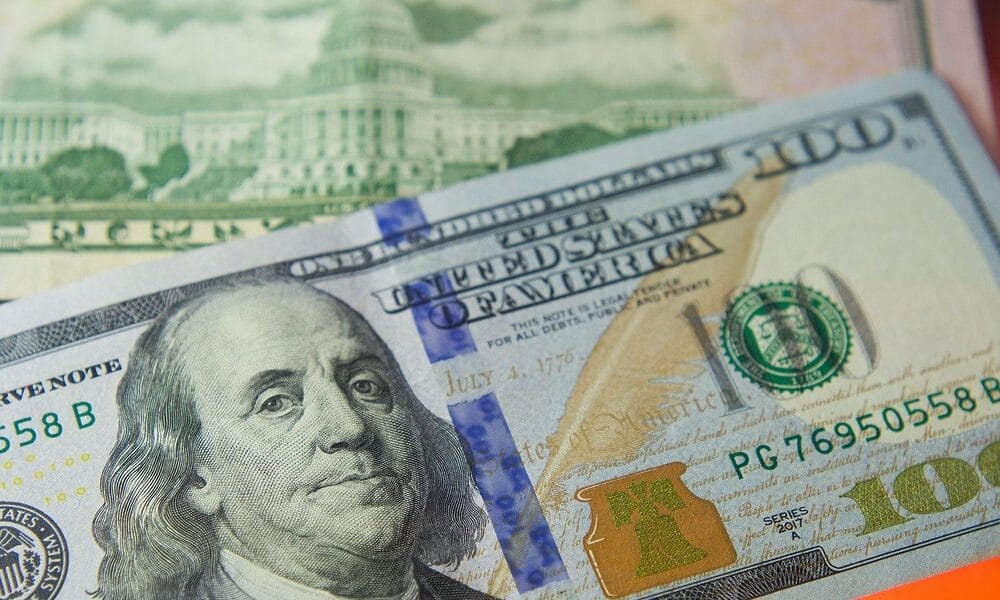How will this affect Mexico, Cuba, Honduras and other countries in the region?

By the end of the year, the US dollar is experiencing negative dynamics, which is the worst performance since 2020.
During the latest trading session on Friday, December 29, the Dollar Index (DXY) registered a slight rise of 0.15% to reach 101,060 units, according to data provided by Investment. This index measures the strength of the US dollar against a basket of six major currencies around the world.
2023: a difficult year for the dollar
Despite a rebound in the final hours of the trading day, the dollar failed to recover from its negative performance in the final month of the year, falling more than 2% year-on-year. This marks the coin’s first year of decline since 2020, ending a two-year positive streak.
The Fed and its unexpected changes in December
The dollar hit its highest level in two decades in 2022, driven by a hawkish stance by the US Federal Reserve (Fed) and aggressive interest rate hikes. However, in the second half of this year, the Fed decided to leave rates unchanged, which had negative consequences in December.
The dollar has weakened on rising expectations that the Federal Reserve will end its cycle of interest rate hikes and begin cutting them in 2024. This has distracted the market’s attention, which is now focusing on when the declines will begin and how they will affect inflation, marking a new not-so-positive scenario for the US currency.
Fed forecasts and their impact on the dollar
As of New Year’s Eve, CME’s FedWatch tool forecasts that there is an 83.5% chance that the Fed will keep interest rates unchanged in January, with the remaining 16.5% suggesting that the Fed could begin cutting interest rates as early as January.
Any decision by the Fed in monetary policy will always directly affect the value of the dollar. In this case, the rate cut is perceived as a challenge for the dollar, since it reduces the attractiveness of assets denominated in this currency for investors seeking higher returns, according to analysts from Investment.
Dollar prices at the end of 2023 in Central America
After the dollar’s fall, the end of 2023 shows the following US dollar prices in Mexico and some Central American countries:
Exchange rate:
- Cuba: 120,0000 Cuban pesos (CUP) – 265,0000 Cuban pesos (CUP) on the informal foreign exchange market.
- Mexico: 16.9725 Mexican pesos (MXN).
- Costa Rica: 519.59 Costa Rican colones (CRC)
- Guatemala: 7.8234 quetzales (GTQ)
- Honduras: 24.6756 lempiras (HNL)
- Nicaragua: 36.6027 Cordobas (NIO)
Buys:
- Cuba: 110.40000 Cuban pesos (CUP) – 262.0000 Cuban pesos (CUP) in the informal foreign exchange market.
- Mexico: 16.9600 Mexican pesos (MXN).
- Costa Rica: 506.95 Costa Rican colones (CRC)
- Guatemala: 7.6428 quetzales (GTQ)
- Honduras: 24.2242 lempiras (HNL)
- Nicaragua: 36.1512 Cordoba (NIO)
Sale:
- Cuba: 123.60000 Cuban pesos (CUP) – 265.0000 Cuban pesos (CUP) in the informal foreign exchange market.
- Mexico: 16.9850 Mexican pesos (MXN).
- Costa Rica: 532.23 Costa Rican colones (CRC)
- Guatemala: 8.0039 quetzales (GTQ)
- Honduras: 25.1271 lempiras (HNL)
- Nicaragua: 37.0541 Cordobas (NIO)
In celebration of the New Year, financial markets will not open until Tuesday, January 2, as the first day is considered a federal holiday.